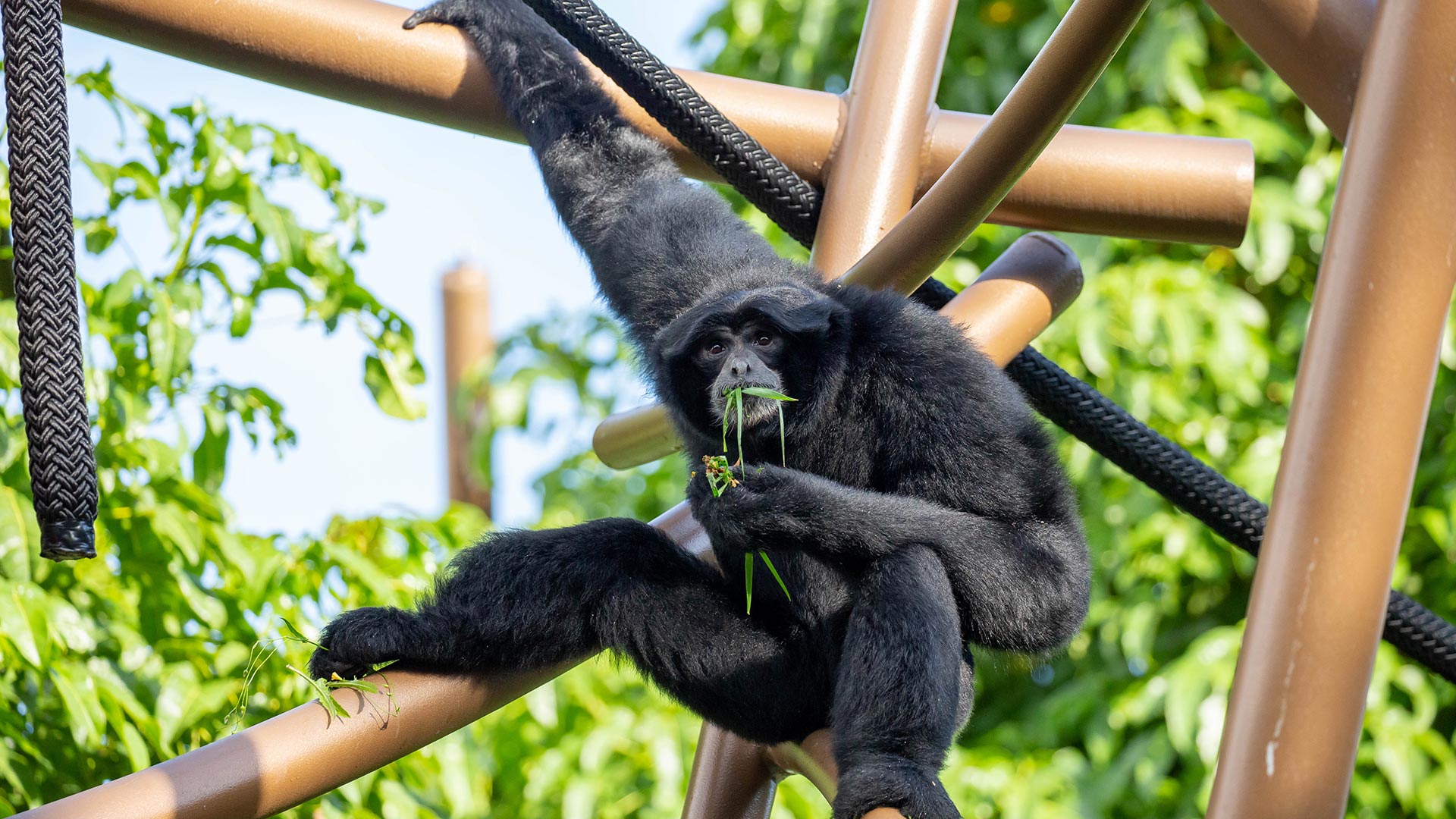At the Zoo
Our male Intan and female Kera have been together at Auckland Zoo since 2015. Kera was born at Mogo Zoo, Australia and arrived in 2009. Intan joined her from Willowbank Wildlife Reserve in Christchurch. Our keepers say that they are best friends and have a close bond. This tight bond is normal for siamangs who are monogamous and mate for life. Of the two, Kera is more confident and Intan usually watches and follows her. They are both very playful and love to monkey around.
At home up high
Siamang are arboreal and love to spend time up high in trees. Here at Auckland Zoo we have designed their new habitat to care especially for the siamangs, so they can move along the ropes and between the trees just like in the jungle. While visiting make sure you take the time to look up in the trees and along the high ropes to catch them in action!
The metal structures you might see in their habitats are designed to be tree-like and will blend in with the vegetation when the trees grow. They have been painted in a special paint to make sure it’s not too hot to touch in the sunshine.
Eating in the tree-tops
Siamang eat a lot of leaves. Half their diet consists of leaves, whether it’s leafy vegetables like you might find in your salad or perhaps the young leaves and shoots of coprosma, bamboo, ferns; their diet also includes a lot of fruit, flowers and insects.
Lots of choice
The habitat is designed to enable lots of choice with multiple arboreal feeders and drinkers, sheltered areas, and loads of climbing options with lots of space to roam.
What’s up doc?
Like all the animals at Auckland Zoo, the siamang have regular vet checks. As part of their care, the keepers use a method called ‘crate training’ where the siamang are rewarded with edible treats for entering the crate. The crate soon becomes a safe place and they enter freely, reducing stress if they need to pop up to the vet for a health check. Keepers also train the siamang to stand on scales. Weighing the siamang is part of the way we can monitor their health. It also allows keepers to get up close to the siamang to visually check them as well.
In the Wild
Origin: Indonesia, Malaysia, Thailand
Habitat: Want to find a siamang in its tropical forest home? Look up! They’re usually found in the trees at a high of 25-30m in sub-tropical rainforests of South East Asia.
Conservation status: Endangered




